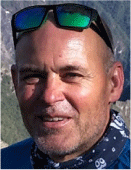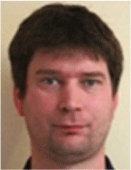The CSIRO In-Situ Laboratory: a field laboratory for derisking underground gas storage
Karsten Michael A B , Ludovic Ricard A , Linda Stalker A and Allison Hortle AA CSIRO Energy, Kensington, Australia.
B Corresponding author. Email: karsten.michael@csiro.au
The APPEA Journal 61(2) 438-441 https://doi.org/10.1071/AJ20144
Accepted: 9 March 2021 Published: 2 July 2021
Abstract
The industry in western Australia has committed to addressing their carbon emissions in response to the governments aspiration of net zero greenhouse gas emissions by 2050. Natural gas will play an important role in the transition to a fully renewable energy market but will require the geological storage of carbon dioxide to limit emissions and enable the production of blue hydrogen. Underground storage of energy in general (e.g. natural gas, hydrogen, compressed air) will be needed increasingly for providing options for temporary storage of energy from renewable resources and for energy export. Storage operations would need to provide adequate monitoring systems in compliance with yet to be defined regulations and to assure the public that potential leakage or induced seismicity could be confidently detected, managed and remediated. The In-Situ Laboratory in the southwest of western Australia was established in 2019 as a research field site to support low emissions technologies development and provides a unique field site for fluid injection experiments in a fault zone and testing of monitoring technologies between 400 m depth and the ground surface. The site currently consists of three wells instrumented with fibre optics, pressure, temperature and electric resistivity sensors as well as downhole geophones. A controlled release of CO2 and various water injection tests have demonstrated the ability to detect pressure and temperature effects associated with fluid injection. Future experiments planned at the site will help in improving the sensitivity of monitoring technologies and could contribute to defining adequate monitoring requirements for carbon dioxide, hydrogen and other energy storage operations.
Keywords: energy underground storage, controlled release experiment, subsurface monitoring, fibre optic sensing.

Karsten Michael has MSc and PhD degrees in Hydrogeology from the Technical University Berlin and from the University of Alberta, respectively. After finishing university, he worked as a hydrogeologist at the Alberta Geological Survey/Alberta Energy and Utilities Board in Canada on the characterisation of acid-gas injection operations before joining CSIRO in Perthin, 2007. He currently is Principal Research Scientist in the CSIRO Energy business unit. Karsten is also project leader of the CSIRO In-Situ Laboratory project that involved recompleting one of the wells at the SW Hub CCS Flagship project in western Australia for monitoring and testing purposes. In the past, Karsten was a project leader for understanding CO2 storage in saline aquifers in the CO2CRC. |

Ludovic Ricard is a reservoir engineer at CSIRO Energy. He holds an MSc from the University of Bordeaux I and a PhD in Earth Sciences from the University of Paris XI. He joined CSIRO Energy as reservoir engineer for geothermal energy projects, later moving to carbon geosequestration and unconventional reservoirs. Currently he is the CSIRO lead of DTS and managing operations at the CSIRO In-Situ Lab research site. He is a member of SPE, SPWLA, FESAus and EAGE. |

Linda Stalker obtained a BSc (Hons) in Applied Geology (University of Strathclyde, Scotland) in 1990. Her PhD on petroleum geochemistry and CO2 generation, was gained at the University of Newcastle-upon-Tyne. In 1994, she joined the University of Oklahoma (the United States) on a Department of Energy sponsored postdoctoral study into organosulphur compounds trapped in coals. From 1996 she worked in petroleum E&P at Statoil, in Norway. She joined CSIRO in 2000 as leader in gas geochemistry specialising in analysis and interpretation of carbon and hydrogen isotopes of oil and gas. She transitioned back to CO2 related research through activities with the CO2CRC (The Cooperative Research Centre for Greenhouse Gas Technologies) conducting research in the geological storage of CO2 and in the area of monitoring and verification (tracers). Since 2010, Linda’s roles have included Science Director for the National Geosequestration Laboratory (NGL), Group Leader roles and recently the acting CEO of the western Australia Energy Research Alliance (WA:ERA). She still finds time to do actual science! |

Allison Hortle is a Senior Researcher with CSIRO Energy since 1993 and is currently Research Group Leader in the Energy Resources Program. Allison’s most recent research addresses the need to couple large scale deep reservoir processes (such as CO2 injection and unconventional gas production) to near surface techniques for determining environmental baselines and long-term monitoring and verification practises. |
References
Michael, K., Avijegon, A., Ricard, L., Myers, M., Tertyshnikov, K., Pevzner, R., Strand, J., Hortle, A., Stalker, L., Pervukhina, M., Harris, B., Feitz, A., Pejcic, B., Larcher, A., Rachakonda, P., Freifeld, B., Woitt, M., Langhi, L., Dance, T., Myers, J., Roberts, J., Saygin, E., White, C., and Seyyedi, M. (2020). A controlled CO2 release experiment in a fault zone at the In-Situ Laboratory in Western Australia. International Journal of Greenhouse Gas Control 99, 103100.Roberts, J. J., and Stalker, L. (2017). What have we learned about CO2 leakage from field injection tests? Energy Procedia 114, 5711–5731.
| What have we learned about CO2 leakage from field injection tests?Crossref | GoogleScholarGoogle Scholar |
Sharma, S., and VanGent, D. (2018). The Australian South West Hub Project: developing confidence in migration assisted trapping in a saline aquifer–understanding uncertainty boundaries through scenarios that stress the models. In ‘14th Greenhouse Gas Control Technologies Conference, Melbourne, 21–26 October 2018 (GHGT-14)’. Available at https://ssrn.com/abstract=3366170
Sharma, S., VanGent, D., Burke, M., and Stelfox, L. (2017). The Australian South West Hub project: developing a storage project in unconventional geology. Energy Procedia 114, 4524–4536.
| The Australian South West Hub project: developing a storage project in unconventional geology.Crossref | GoogleScholarGoogle Scholar |


